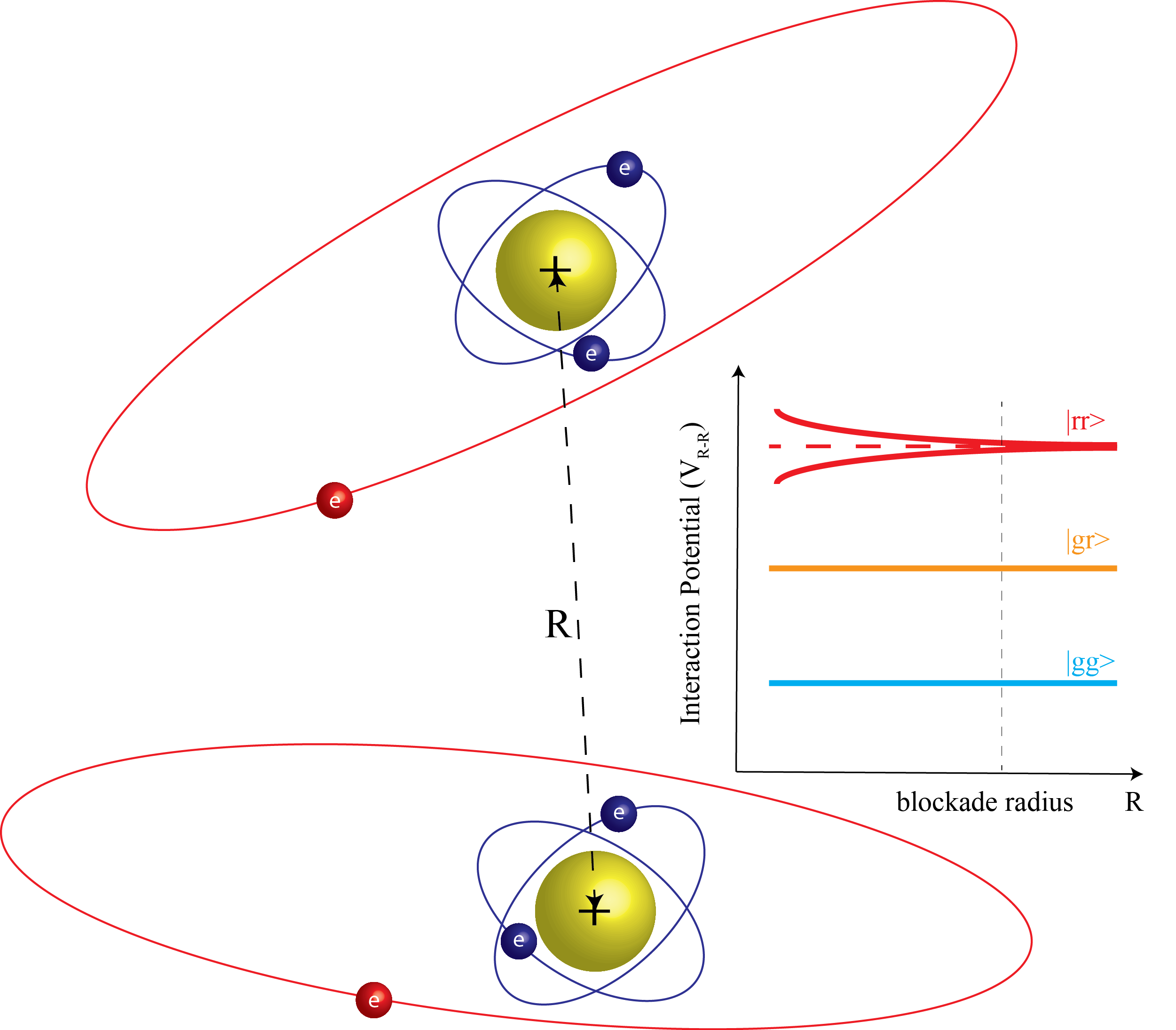Rydberg Exciton-Polariton
Motivation
Creating isolated, two-level quantum systems (qubits) that can be coupled to perform gate operations or study many-body quantum systems is one of the outstanding goals in quantum information science. A highly excited atom whose electron has moved to a large principal quantum number is known as Rydberg atom. In cold-atom systems, Rydberg states have been used to create and coherently control non-classical states of light and atoms. Due to the large extent of the electron wavefunction hence the giant size of the Rydberg atoms, their dipole-dipole, and van-der-Waals interactions are very strong. Despite their tremendous success of cold Rydberg atoms in exploring various aspects of fundamental as well as quantum-information science, their integration and scalability have remained elusive so far, due to the demand for bulky laser cooling schemes. Semiconductor and solid-state systems on the other hand are ideal candidates for the scalable quantum technologies. Silicon, the essential ingredient of transistors and electronic logic gates, was the backbone of the computer technology revolution half-a-century ago. So we are asking ourselves "Is there a way of combining the strength of Rydberg atoms with the benefits of solid-state system scalability?"

Overview
We are building an experiment to study Rydberg excitons in solid-state platforms. Exciton, aka the Hydrogen atom of a condensed matter physicist, is an electron-hole pair bounded by the Coulomb attraction. We are interested in studying the quantum optical properties of excitons excited to a state with a high principal quantum number (n>10). The size of a Rydberg exciton wavefunction grows as n2, leading to a very large dipole moment and exciton-exciton interaction energy. If the interaction is strong enough, one cannot have more than one excitation within a finite volume around each Rydberg exciton. This phenomenon known as "Rydberg blockade" is a unique powerful feature of Rydberg atoms. This figure illustrates the concept of Rydberg-Rydberg interaction and the blockade effect.
Goals
Our lab at Purdue University not only strives to explore the fundamentals of quantum optics in these highly-interacting photon ensembles but also is determined to employ these findings towards scalable, chip-scale quantum technologies. Rydberg exciton-polaritons offer a promising combination of such new capabilities afforded by the strong interactions between Rydberg states with the technological advantages of semiconductor photonics.
